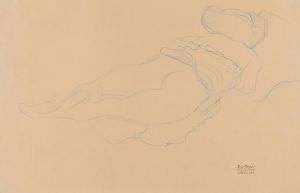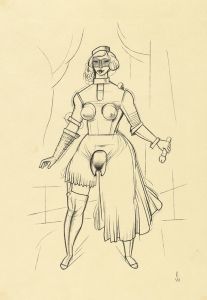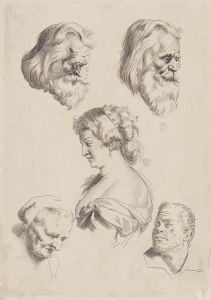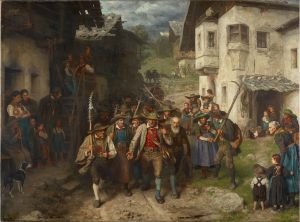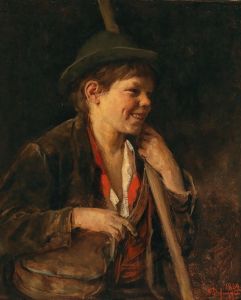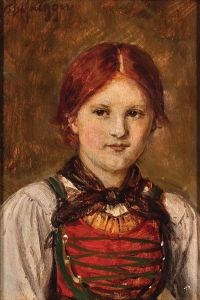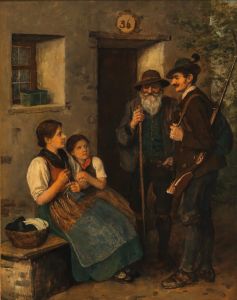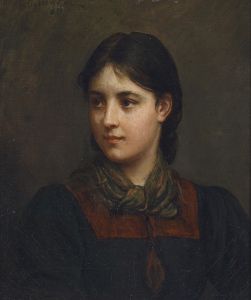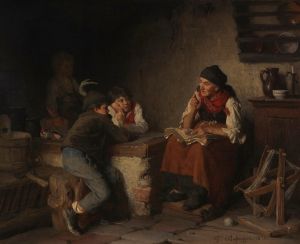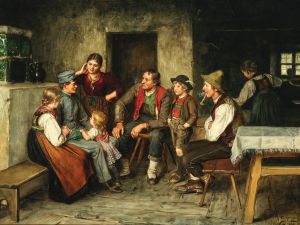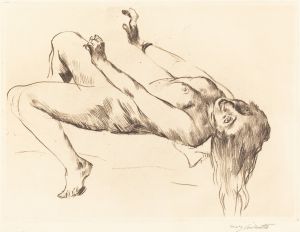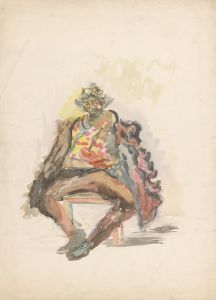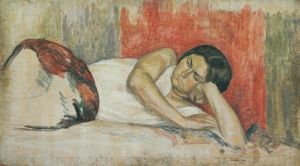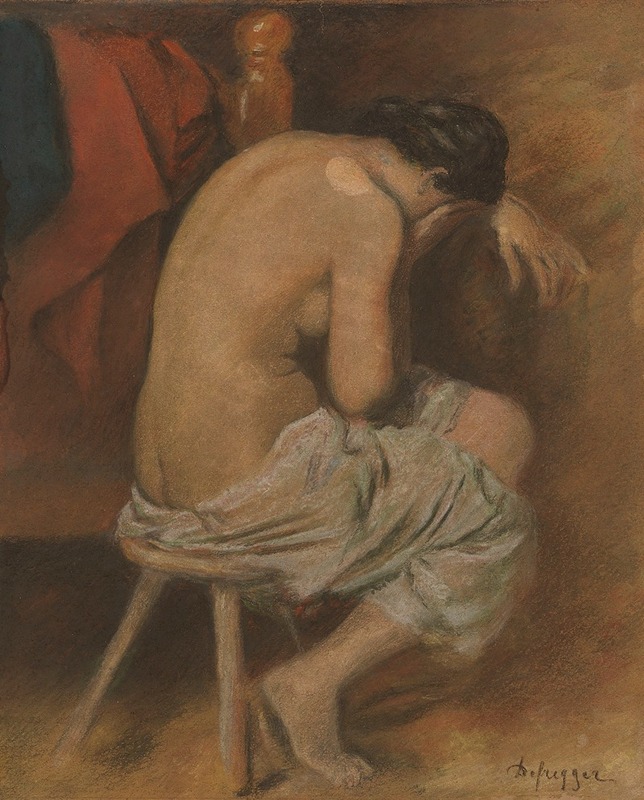
Rückenakt
A hand-painted replica of Franz von Defregger’s masterpiece Rückenakt, meticulously crafted by professional artists to capture the true essence of the original. Each piece is created with museum-quality canvas and rare mineral pigments, carefully painted by experienced artists with delicate brushstrokes and rich, layered colors to perfectly recreate the texture of the original artwork. Unlike machine-printed reproductions, this hand-painted version brings the painting to life, infused with the artist’s emotions and skill in every stroke. Whether for personal collection or home decoration, it instantly elevates the artistic atmosphere of any space.
Franz von Defregger was an Austrian painter known for his genre scenes and portraits, often depicting Tyrolean themes and historical subjects. One of his works, "Rückenakt," is a painting that exemplifies his skill in capturing the human form and his attention to detail. However, specific information about "Rückenakt" is limited, as it is not one of Defregger's most widely discussed or documented works.
Defregger was born on April 30, 1835, in Stronach, Tyrol, which was then part of the Austrian Empire. He initially pursued a career in agriculture, but after selling his family farm, he moved to Munich to study art. He became a student at the Academy of Fine Arts in Munich, where he studied under the guidance of Karl von Piloty, a prominent history painter of the time. Defregger's education and experiences in Munich significantly influenced his artistic style, which combined elements of realism with a romanticized view of rural life.
Throughout his career, Defregger became well-known for his depictions of Tyrolean peasant life, historical events, and portraits. His works often reflected a sense of nostalgia and national pride, capturing the spirit and traditions of the Tyrolean people. While "Rückenakt" is not as famous as some of his other paintings, it is an example of his ability to portray the human figure with sensitivity and precision.
The title "Rückenakt" translates to "Nude from the Back" in English, suggesting that the painting features a nude figure viewed from behind. This type of composition allows the artist to focus on the form and anatomy of the human body, emphasizing the play of light and shadow across the skin. Such studies were common in academic art training, where artists honed their skills in rendering the human figure accurately.
Defregger's work, including "Rückenakt," reflects the broader trends in 19th-century European art, where there was a strong emphasis on technical skill and the realistic depiction of subjects. His paintings often exhibit a careful attention to detail, whether in the textures of fabric and skin or the subtle expressions of his subjects.
Despite the lack of extensive documentation on "Rückenakt," Defregger's overall contribution to art is well-recognized. He was a member of the Munich School, a group of artists known for their realistic and detailed approach to painting. His works were exhibited widely during his lifetime, and he received numerous accolades for his contributions to art.
Franz von Defregger passed away on January 2, 1921, in Munich, leaving behind a legacy of paintings that continue to be appreciated for their technical excellence and cultural significance. While "Rückenakt" may not be as prominently featured in discussions of his oeuvre, it remains a testament to his skill as a painter and his ability to capture the beauty of the human form.






